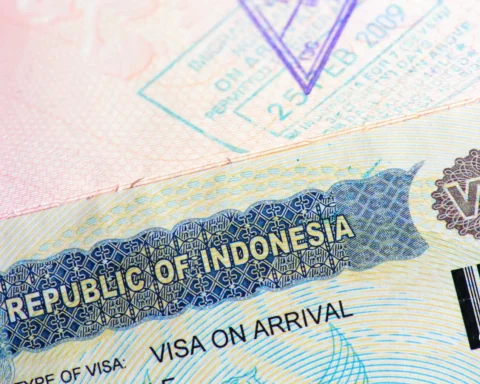Malawi, a landlocked nation in Southeast Africa, thrives on its rich agricultural resources and diverse economic potential. However, its geographical location presents a challenge for international trade, requiring access to seaports in neighbouring countries. This article delves into the significance of Malawi's nearest sea ports, highlighting their current role and exploring their potential for future trade opportunities.
Table of Contents
Location
Malawi's geographical location places it in the heart of Southeastern Africa, bordered by Zambia to the west, Tanzania to the north and northeast, and Mozambique to the east, south, and southwest. Situated between approximately 9° and 18° South latitude and 32° and 36° East longitude, Malawi is entirely landlocked, with no direct access to the sea. Despite its lack of coastline, Malawi's strategic position within the region offers challenges and opportunities for economic development and regional cooperation.
Zambia shares a border with Malawi to the west, providing vital land connections and trade routes between the two countries. Zambia's proximity facilitates cross-border trade and cultural exchange, contributing to the economic growth and social integration of both nations.
In the north and northeast, Tanzania forms a significant neighbour to Malawi. The border between Malawi and Tanzania spans vast stretches of land, fostering significant diplomatic and economic ties between the two countries. Major cities like Dar es Salaam and Mbeya in Tanzania serve as prominent centres of commerce and transportation, further enhancing connectivity and collaboration between the neighbouring nations.
To the east, south, and southwest, Malawi shares its longest border with Mozambique. This shared border plays a crucial role in facilitating trade and transit between Malawi and Mozambique, contributing to the economic vitality of both countries. Cities such as Beira, Tete, and Nampula in Mozambique serve as key hubs for trade and transportation, strengthening the economic ties and regional cooperation between Malawi and its southern neighbour.
While cities like Dar es Salaam in Tanzania and Beira in Mozambique are not considered official neighbours of Malawi, their proximity to the country significantly influences trade, transportation, and regional dynamics. The strategic location of these cities, along with others in neighbouring countries, underscores the interconnectedness and interdependence of nations within the Southeastern African region. Overall, Malawi's geographic position and relationships with neighbouring countries are pivotal in shaping its economic development, regional integration, and diplomatic engagements.
YOU MIGHT BE INTERESTED IN: Inside Malawi with Attorney General Thabo Chakaka-Nyirenda: BITs, FDIs and Combating Corruption
Types of Ports in Malawi
Malawi, being a landlocked country, does not have traditional seaports. However, it does have several ports along Lake Malawi (also known as Lake Naysa), which serve as crucial gateways for inland water transportation and trade. These ports play a significant role in facilitating domestic and regional commerce and providing access to international markets through connections with neighbouring countries. Here are the main types of ports found in Malawi:
Lake Ports
These ports are located along Lake Malawi's shores, the country's largest body of water.
Monkey Bay: Monkey Bay is located on the western shore of Lake Malawi in the southern region of Malawi. As a vital maritime hub, Monkey Bay primarily operates as a passenger port, connecting various lakeside towns and villages through ferry services. Its strategic location also makes it a popular tourist destination, offering picturesque views and easy access to nearby national parks. While Monkey Bay has limited cargo handling capabilities, it supports local trade within the region, contributing to economic activities along the lakeshore.
The MV Ilala is a vital ferry on Lake Malawi, connecting Likoma Island, mainland Malawi, and Mozambique. It serves as a lifeline for communities, providing essential passenger and cargo transportation services. The ferry facilitates economic exchange and cultural interaction between Malawi and Mozambique. Its operations support regional development and foster connectivity within the Lake Malawi region. Overall, the MV Ilala plays a pivotal role in Malawi's transportation system and the socio-economic well-being of the communities it serves.
Nkhata Bay: Nkhata Bay is situated on the western shore of Lake Malawi, further north compared to Monkey Bay. Functioning primarily as a passenger port, Nkhata Bay facilitates ferry services, linking different lakeside communities and providing essential transportation for locals and visitors alike. Additionally, Nkhata Bay serves as a central hub for the local fishing industry, with numerous fishing boats operating from the port to support the region's fishing activities. While Nkhata Bay supports regional trade and transportation, its cargo handling facilities are limited compared to larger ports.
Chipoka: Chipoka lies on the eastern shore of Lake Malawi, positioned in the central region of Malawi. As the most significant inland lake port in the country, Chipoka serves as a crucial gateway for both passengers and cargo. The port connects with other lakeside towns and villages through ferry services, facilitating regional transportation and trade activities. Chipoka boasts extensive cargo handling facilities, including warehouses and cranes, enabling efficient handling of goods for import and export. Notably, Chipoka features a railhead, allowing for seamless transfer of goods between water and land transportation modes, further enhancing its role as a pivotal logistics hub in the central region of Malawi.
Inland Ports
Inland ports are facilities located further inland along navigable rivers or waterways connected to Lake Malawi. These ports are intermediate points for transferring goods between waterborne vessels and land-based transportation modes, such as trucks or trains. They play a crucial role in facilitating the movement of goods to and from regions not directly accessible by water.
Blantyre: Malawi's largest city and commercial hub, Blantyre, houses an inland container depot (ICD). This facility serves as a dry port, allowing cargo to be consolidated and cleared before being transported to or from seaports via road or rail.
Limbe: Located close to Blantyre, Limbe also features an inland dry port (IDP). This facility plays a crucial role in supporting the manufacturing and industrial activity within the region.
Mzuzu: Situated in northern Malawi, Mzuzu is a major commercial centre and transportation hub. Its dry port serves the northern region of the country, facilitating trade and logistics activities.
Lilongwe: Lilongwe is the capital of Malawi and also boasts an ICD. This facility serves as a central point for cargo movement within the country, connecting to Blantyre's ICD and Malawi's neighbouring seaports.
Fishing Ports
Given the importance of fishing to the economy and livelihoods of many Malawians, fishing ports are essential for the handling and processing of fishery products. These ports may have facilities for fish storage, processing, and distribution and infrastructure to support the local fishing industry. Fishing ports can be found in various locations along the shores of Lake Malawi, catering to the needs of artisanal and commercial fishing activities.
What are Malawi's Nearest Sea Ports?
Malawi's landlocked status presents unique challenges for international trade, necessitating reliance on the closest ports in neighbouring countries. Here, we delve into an overview of the key ports utilized by Malawian businesses for their import and export activities.
Port of Beira, Mozambique
Location: Approximately 570 kilometres east of Blantyre, Malawi's commercial hub.
Purpose: The Port of Beira stands out as the most frequently used port by Malawian businesses, owing to its proximity and well-established trade links. Offering efficient cargo transit and robust infrastructure, Beira serves as a reliable choice for both exports and imports, facilitating seamless trade transactions for Malawi.
Port of Durban, South Africa
Location: Located approximately 1,600 kilometres southeast of Blantyre.
Purpose: Despite being farther away from Malawi, the Port of Durban in South Africa offers a broader range of shipping options and connections to international markets. While transportation costs may be higher, Durban provides access to specialized shipping services and specific trade routes, making it a preferred choice for certain types of cargo or trade partnerships.
Port of Nacala, Mozambique
Location: Situated around 890 kilometres northeast of Blantyre.
Purpose: The Port of Nacala presents a relatively new option for Malawian businesses with potential for future development. Its closer proximity compared to Beira offers a potentially more cost-effective alternative, albeit with lesser established infrastructure at present. However, Nacala holds promise as a viable port for Malawian trade in the future.
Port of Maputo, Mozambique
Location: Located approximately 1,100 kilometres southeast of Blantyre.
Purpose: While less frequently utilized than Beira, the Port of Maputo is another option for Malawian trade. Particularly suitable for specific cargo types or trade partnerships with other countries in southern Africa, Maputo provides Malawi with an alternative gateway to international markets.
Additional Ports
Port of Dar-es-Salaam, Tanzania: Owing to its geographical positioning, it is primarily used on a limited basis, especially for trade with specific East African countries.
Port of Cape Town, South Africa: Malawian businesses rarely utilize this port due to the significant distance and resulting high transportation costs, although it remains an option for certain specialized trade requirements.
LISTEN TO THIS PODCAST: Inside Malawi: A Fascinating Tale of Independence and Identity with Hitesh Anadkat
The Importance of Seaports for Malawi
While Malawi boasts impressive internal transportation networks, including Lake Malawi and a network of roads, seaports play a crucial role in facilitating international trade. They serve as vital entry and exit points for goods, enabling the country to connect with global markets for import and export. Efficient and accessible seaports are essential for:
Boosting exports: Seaports provide a cost-effective and efficient way to transport Malawi's key exports, such as tobacco, tea, and coffee, to international markets. This facilitates economic growth by generating foreign revenue and creating jobs within the export sector.
Facilitating imports: Essential goods, such as machinery, fuel, and manufactured products, are often imported through seaports. Accessible ports ensure timely and cost-effective movement of these goods, contributing to the nation's economic development.
Challenges and Considerations
Utilizing these seaports presents particular challenges for Malawi. These include:
Reliance on neighbouring countries: Dependence on foreign ports creates vulnerability, as Malawi has limited control over infrastructure development and operational efficiency at these facilities.
Transportation costs: The distance between Malawi and its seaports translates to significant transportation costs, which can impact the competitiveness of Malawian goods in the international market.
Border inefficiencies: Delays and inefficiencies at border crossings can further hinder the smooth flow of goods, adding to transportation time and costs.
New Opportunities of Trade
Despite the challenges of Malawi's landlocked status, several promising developments are paving the way for new opportunities in Malawian trade through neighbouring seaports. One key factor driving optimism is the ongoing infrastructure improvements to enhance connectivity between Malawi and its ports. Projects like the Nacala Corridor development focus on upgrading road and rail infrastructure, which could significantly reduce transportation costs and time for goods moving to and from the ports. Improved transportation links increase trade efficiency and make Malawi more competitive in the regional market by offering faster and more cost-effective logistics solutions.
Furthermore, increased regional integration efforts within the Southern African Development Community (SADC) present a promising avenue for enhancing trade facilitation. As countries in the region work together to streamline border crossings and harmonize trade processes, Malawi stands to benefit from smoother and more predictable trade routes. Trade agreements and cooperation initiatives within SADC create an environment conducive to fostering trade relationships and expanding market access, thus opening up new opportunities for Malawian businesses to engage in cross-border trade.
Moreover, investment in inland facilities, such as dry ports and improved logistics infrastructure within Malawi, holds significant potential for bolstering the country's trade ecosystem. By diversifying transportation options and reducing reliance solely on coastal ports, inland facilities can enhance efficiency and resilience in the face of logistical challenges. These investments improve the flow of goods within Malawi and contribute to the country's overall competitiveness in the trade sector. Additionally, inland facilities can serve as distribution centres and hubs for value-added services, further enhancing Malawi's role as a key player in regional trade networks.
Conclusion
Relying on Malawi's nearest sea ports presents challenges, but ongoing infrastructure improvements and regional cooperation efforts aim to enhance connectivity and efficiency. By strategically utilizing these vital gateways, Malawi can solidify its position as a key player in the African market and unlock its full trade potential.
FAQs
What is the main sea route in East Africa?
The main sea route in East Africa is the Suez Canal, which connects the Red Sea to the Mediterranean Sea. This significantly reduces travel time between Asia and Europe for ships not travelling around the Cape of Good Hope.
What are the two sea ports used by Zimbabwe?
Due to its landlocked location, Zimbabwe doesn't have its own seaports. However, it relies heavily on neighbouring Mozambique's ports, primarily Beira and Durban in South Africa, for international trade access.
What ocean is Malawi on?
As a landlocked country, Malawi doesn't directly border any ocean. However, it is situated in southeastern Africa and shares a coastline with Lake Malawi, also known as Lake Nyasa. The lake is connected to the Indian Ocean via the Shire and Zambezi rivers.
Which is the longest seaport in the world?
Port of Shanghai in China, stretching over 3,619 square kilometres.










